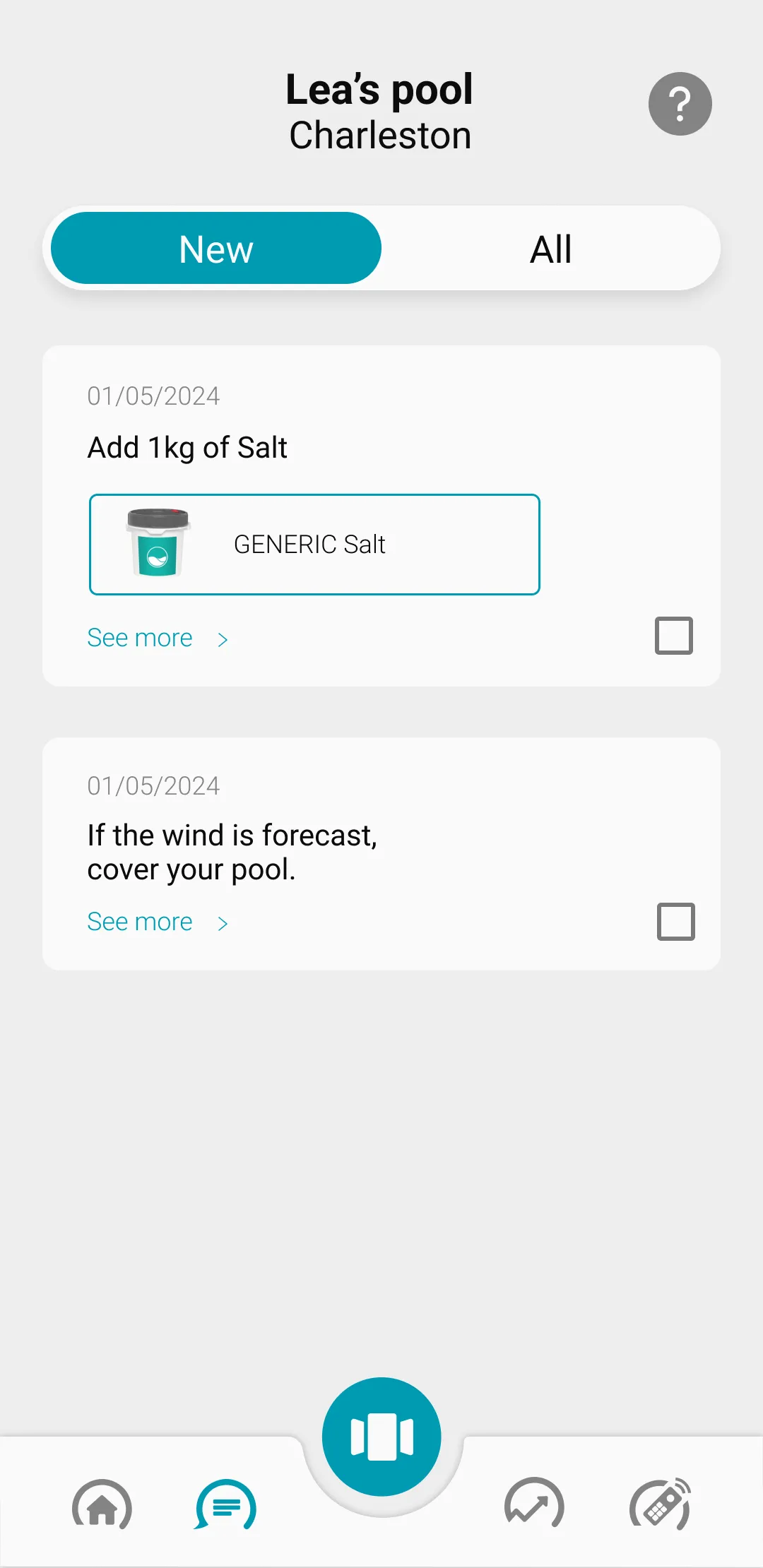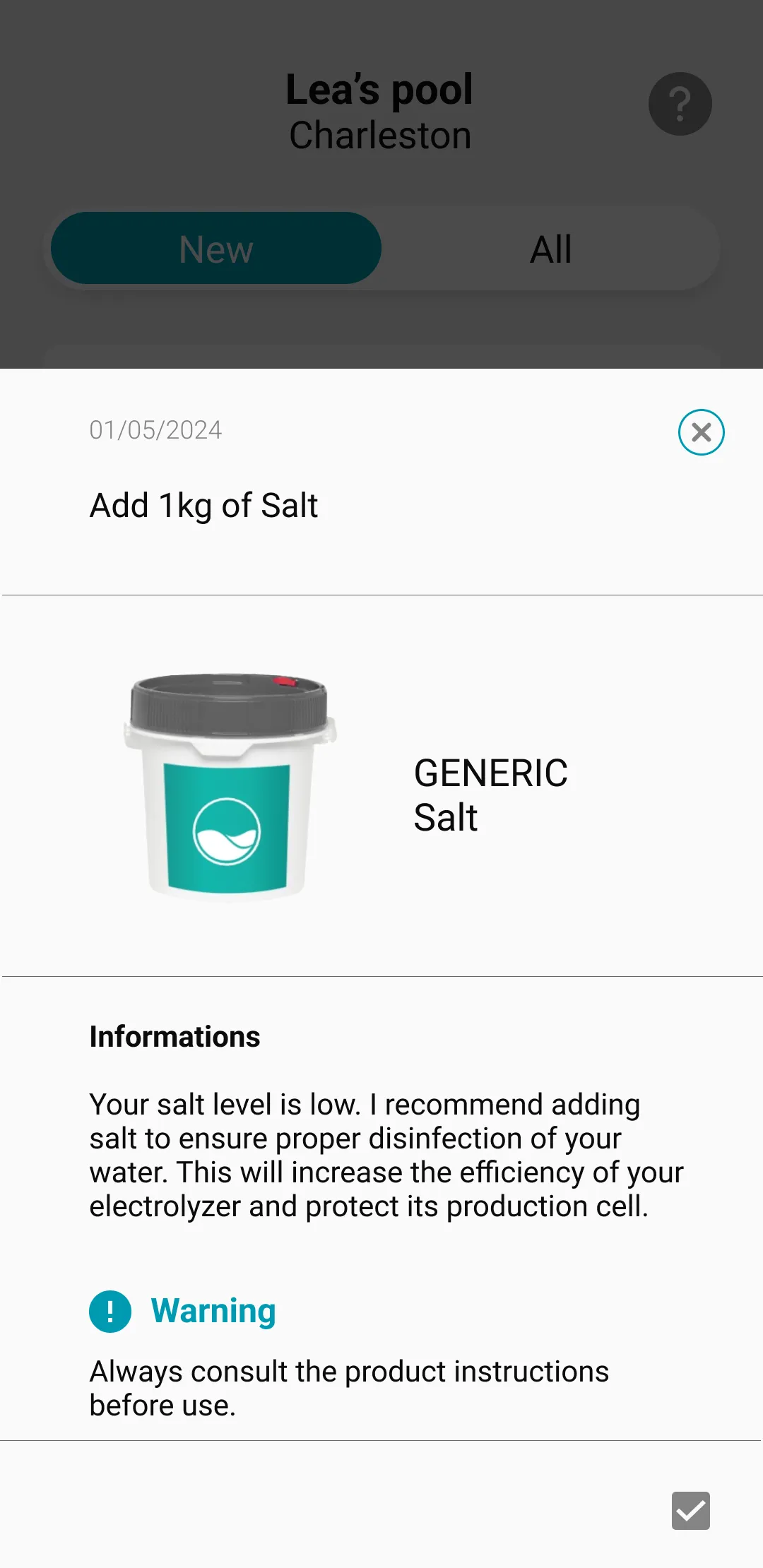For Salt versions, ICO measures the TDS (Total Dissolved Solids) or salinity of water in pools and spas equipped with a salt chlorinator. This value, directly linked to the conductivity of the water, enables you to control the balance of the water and, in particular, the amount of salt available in your pool.
In a salt pool or spa a value of between 3,000 and 5,000 ppm (or 3 to 5g/l) is ideal.
On your ICO application, you can find the TDS trends for your pool or spa by clicking on the trend icon.

If you need to take action on the TDS, ICO sends you a recommendation, which you can access from your application dashboard.


Fluctuation in TDS measurements may be normal. Depending on the water temperature or the number of bathers, ICO may detect changes between two consecutive measurements.
If you observe a variation of more than 700 ppm between two measurements, and you have not carried out any recent chemical treatment that could explain this large variation, please check the following information:
If you have not detected any particular problems with the equipment listed, please contact our support department.
If the TDS measurement graph in your application seems abnormal and you haven't found an explanation in this article, please contact our customer support. Learn more about differences between TDS, TAC and TH.
It's important to check your TDS readings regularly to ensure water balance. If the TDS is too high or too low, the equipment will deteriorate. TDS also has a major influence on the effectiveness of disinfectant products: the higher it is, the less effective the treatment products will be.
There are no treatments for lowering the TDS level in water, except to partially renew the water in your pond. However, before doing so, we recommend that you try to naturally lower the TDS value by reducing the water temperature:
When the TDS is too low (< 200 ppm for chlorine/bromine; <2500 ppm salt pools) , the water can damage your equipment and irritate your eyes. This phenomenon is particularly noticeable at the start of the season, when water temperatures are cool.
An increase in water temperature, either natural (with sunlight) or mechanical (heat pump or blanket), increases the TDS.